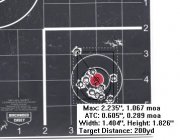CaptainMal
Silver $$ Contributor
'60's lot of 6MM Rem. brass. Been through 4 different rifles. Started splitting necks literally every shot or die pass. Sat in a box for a decade.
Wanted to learn how to anneal my Dasher brass. Started with this junk. Just 10 seconds in a rotating socket with old propane torch. Now I have loaded and shot them at least 2 - 3 times. One failure out of say 100. Almost nothing.
What I learned is annealing works. Even screwed up, unprofessional methods like mine work.
Wanted to learn how to anneal my Dasher brass. Started with this junk. Just 10 seconds in a rotating socket with old propane torch. Now I have loaded and shot them at least 2 - 3 times. One failure out of say 100. Almost nothing.
What I learned is annealing works. Even screwed up, unprofessional methods like mine work.












